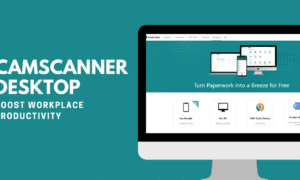As U.S. businesses accelerate their push toward digital transformation, a growing disparity is becoming evident. While large corporations invest heavily in cloud infrastructure, real time data systems, and intelligent automation, small and medium sized enterprises often remain anchored to outdated billing processes that cannot support their evolving operations. In industries that increasingly demand agility, whether in SaaS, professional services, or telecommunications, the inability to scale billing and pricing frameworks is quietly becoming a critical bottleneck.
The implications are not trivial. According to the Association of Chartered Certified Accountants, nearly sixty percent of SMEs report that rising operational costs are threatening their profitability. Yet, many continue to process invoices manually, reconcile accounts through spreadsheets, and lack the pricing flexibility required to respond to market volatility. As competitors adopt usage based billing, dynamic pricing, and cross system integration, businesses stuck in static workflows risk more than inefficiency. They risk irrelevance.
It is this widening technological gap that led Renato Kolbe, a seasoned Brazilian software architect, to establish Ramk IT Solutions LLC. With more than thirty years of experience in designing revenue critical systems for banking and telecommunications institutions, Kolbe recognized that SMEs across the United States are underserved by billing platforms that were never built with their needs in mind. Based in Miami, Ramk is positioned to change that by providing tailored, cloud based billing infrastructure that brings enterprise grade capabilities to smaller, fast moving businesses.
Kolbe’s understanding of complexity is not theoretical. His early work in Brazilian financial institutions saw him navigate everything from magnetic file transfers in the 1990s to the early implementations of online banking platforms. Later, he became a key figure in projects involving telecom data mediation and IoT billing, sectors that require high reliability, scalability, and compliance with intricate pricing logic. For Kolbe, these environments honed not only his technical acumen but also his perspective on the need for adaptable systems in diverse business contexts.
Now, Kolbe is adapting those insights to the American SME landscape, where billing systems often lag behind broader digital transformations. “There is a misconception that innovation only belongs to tech giants,” he says. “But small businesses are often the ones who need it most. They are agile, they are customer facing, and they suffer the most when processes break down.”
Ramk IT Solutions is designed to meet that need with a consultative approach, offering modular solutions that can integrate directly into existing enterprise platforms such as CRM and ERP systems. By minimizing the friction between revenue operations and service delivery, the firm aims to help clients maintain clearer visibility over financial health, reduce dependency on manual processes, and avoid the kind of billing inconsistencies that lead to client churn or regulatory complications.
This operational clarity becomes even more important in a labor environment where skilled IT professionals are in short supply. The U.S. Bureau of Labor Statistics projects a seventeen percent increase in demand for software and systems developers over the next decade, significantly outpacing most other fields. Meanwhile, industry groups like CompTIA estimate that nearly half a million IT positions go unfilled each year due to a shortage of qualified candidates. Ramk’s architecture is designed to mitigate this by enabling automation in functions that would otherwise require additional personnel, an important feature for SMEs facing hiring constraints.
Beyond automation, Ramk’s platform incorporates elements of predictive pricing and scenario modeling, helping businesses simulate the financial impact of different billing strategies. This type of flexibility is particularly valuable in subscription based models, where consumer behavior, seasonal shifts, and service usage patterns can have a direct and immediate effect on revenue. With these tools, SMEs can shift from reactive financial management to proactive strategy development, something that can distinguish stability from vulnerability in uncertain markets.
Kolbe also envisions Ramk as a contributor to economic resilience beyond its client base. By making advanced billing systems more accessible, the company supports broader goals of national digital readiness. According to Gartner, by 2026 cloud native systems are expected to underpin nearly all business growth strategies across sectors. Ramk’s SaaS first model ensures that even smaller firms can align with these trends without the need for capital heavy infrastructure investments.
As Kolbe builds the company’s foundation, he is also investing in its future capabilities by nurturing technical talent and prioritizing knowledge transfer. His plan includes developing in house expertise through mentorship and providing ongoing support to clients who may be unfamiliar with advanced IT billing systems. This dual investment in people and process reflects a commitment not only to solving today’s challenges but to anticipating tomorrow’s.
“The success of a business should not be determined by the complexity of its billing system,” Kolbe notes. “My goal is to remove that barrier, to make these systems serve the business, not the other way around.”
Ramk IT Solutions is not simply introducing new software into the market. It is advocating for a shift in how smaller enterprises view billing, not as a backend administrative task but as a strategic function that can drive efficiency, improve transparency, and support long term growth. With Kolbe at the helm, and with deep technical credibility to back its vision, the company stands ready to redefine what operational maturity looks like for the nation’s SMEs.





























